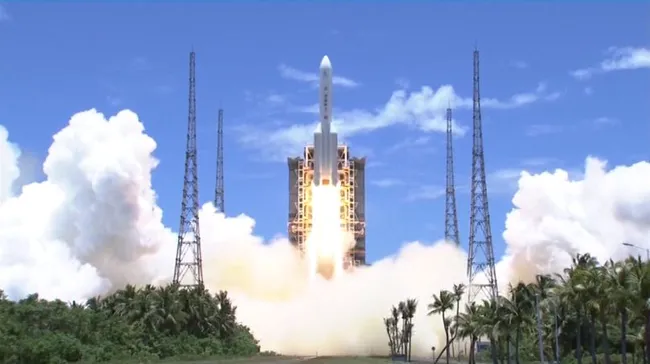Imagine a solar power plant so vast it dwarfs anything on Earth, floating 22,000 miles above us in geostationary orbit, soaking up sunlight ten times stronger than what hits the ground. That’s the audacious vision China’s laying out with its plan for a massive 0.6-mile-wide solar array in space, designed to beam energy back to Earth via microwaves. When I read about this project, led by Long Lehao, the mastermind behind China’s Long March rockets, I couldn’t help but see it as more than a sci-fi headline. It’s a wake-up call for American companies, especially those in energy, aerospace, and tech, to get in on the ground floor of what could be the next frontier in clean energy.
The numbers are staggering. This space-based solar power (SBSP) station, described as a “Three Gorges Dam in the sky,” could collect energy equivalent to all the oil on Earth in a single year. Unlike ground-based solar farms, it sidesteps clouds, atmospheric interference, and nighttime lulls, capturing sunlight 24/7. China’s betting big on this, with plans to haul components into orbit using the Long March-9, a reusable heavy-lift rocket capable of carrying 150 tons. This isn’t just about energy—it’s a flex of China’s space ambitions, tied to their goal of a lunar research base by 2035. For US firms, this signals a market that’s about to explode with opportunity.

Why should American businesses care? Because this project is a magnet for innovation. Building a solar array in space demands cutting-edge tech—think advanced photovoltaics, microwave transmission systems, and orbital logistics. US companies like Lockheed Martin and Northrop Grumman are already sniffing around SBSP, but China’s head start could set the pace. I spoke with an engineer friend in the aerospace sector who pointed out that American expertise in satellite tech and energy systems could find a massive market in China, either through joint ventures or supplying specialized components. The ripple effects don’t stop there: the data and tech developed for space solar could revolutionize terrestrial energy grids, giving US firms a chance to refine their own products.
But it’s not just about selling to China. Getting involved—whether through partnerships or market observation—means learning from a country that’s turning wild ideas into reality. China’s already proven it can scale infrastructure like nobody else, and this project is a chance to study their playbook up close. A small team in Beijing or Shanghai could uncover insights into scaling renewable tech or navigating regulatory hurdles, knowledge that translates directly back to American markets. I’ve seen startups in California pivot their entire strategy after a single market study trip to Asia, coming back with ideas that gave them an edge.
Sure, jumping into China’s market isn’t seamless. The regulatory landscape can be complex, and geopolitical tensions require careful navigation. That’s why starting small makes sense—send a team to explore, build relationships, and understand the terrain before diving in deep. China’s space solar array isn’t just a power plant; it’s a glimpse into a future where energy isn’t bound by Earth’s limits. For American companies, it’s a chance to collaborate, innovate, and stake a claim in a market that’s literally out of this world. If you’re strategizing in a boardroom in Houston or Silicon Valley, this project in Xinjiang’s orbit is worth a long, hard look.
Talk to us, we’ll help you succeed in China.